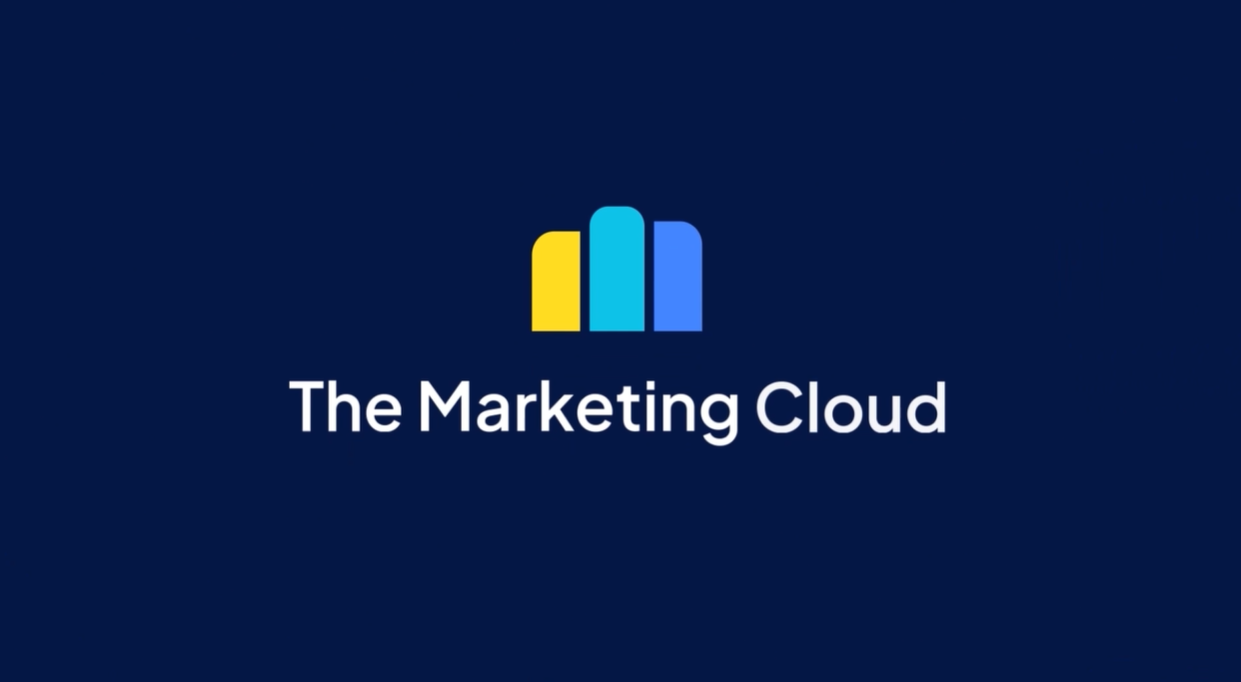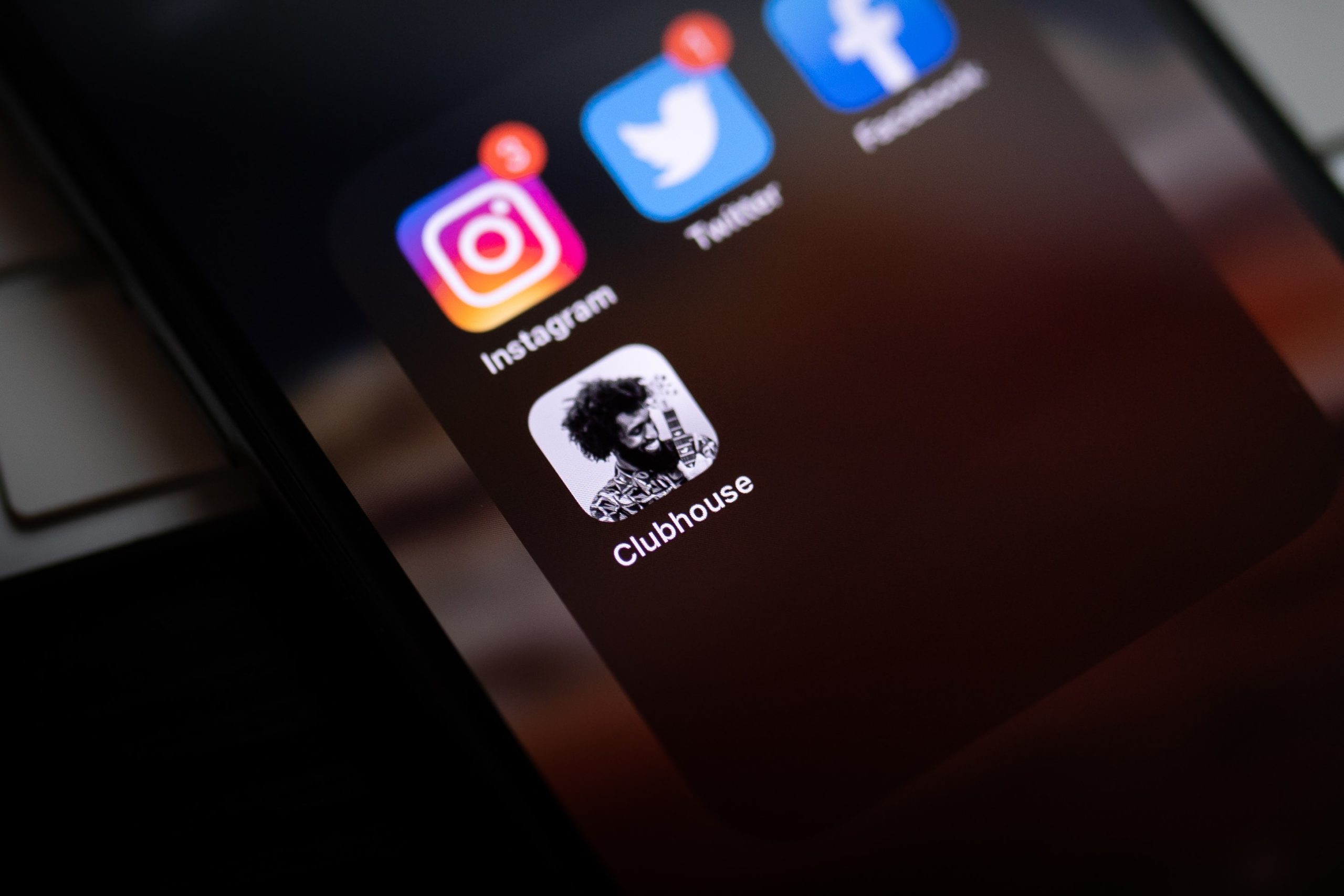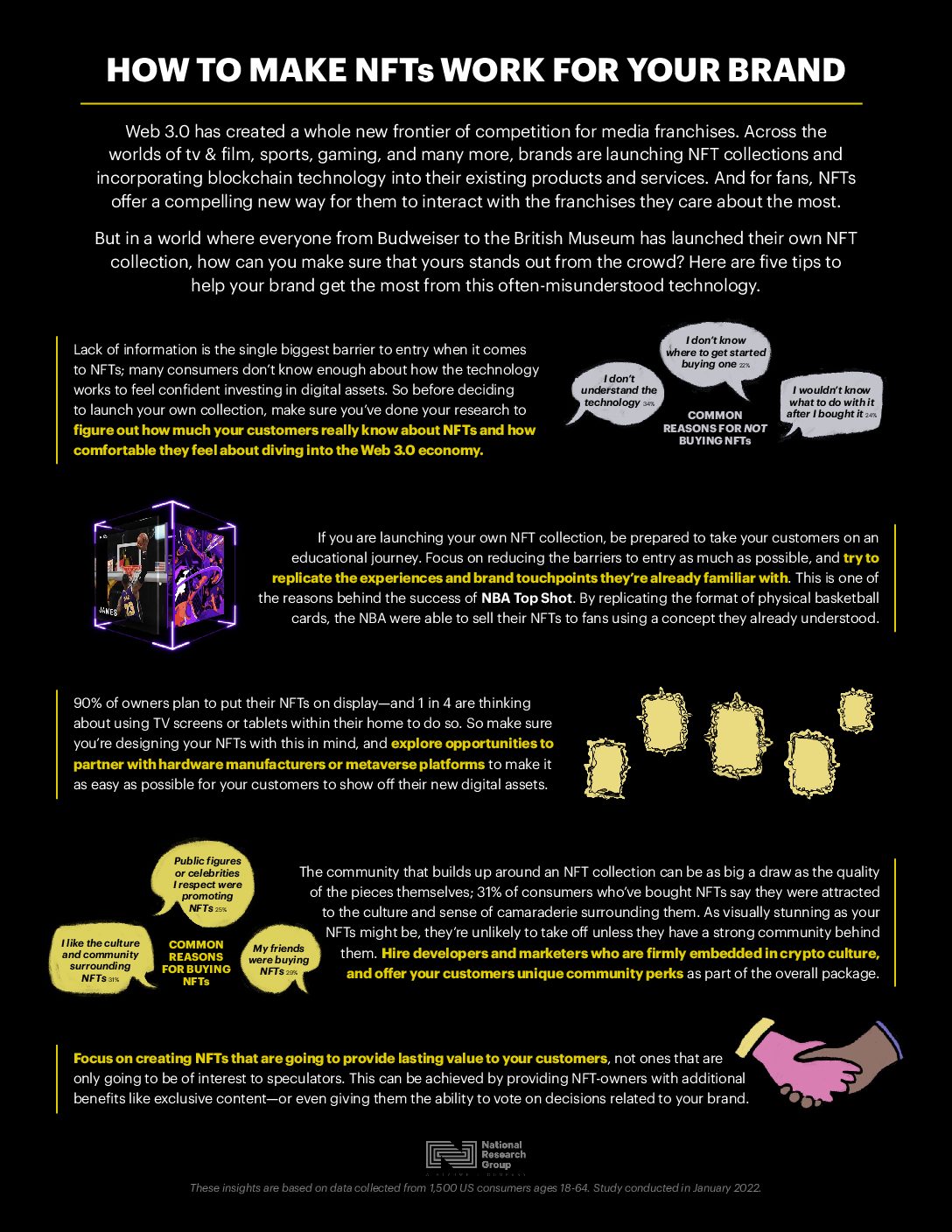By
Matt Maher
Contributor, Stagwell
SIGN UP FOR OUR INSIGHTS BLASTS
From NFTs and the evolving Web3 landscape to the transformative power of digital audio, Stagwell’s experts share the top five trends and brand takeaways from SXSW 2022. Interested in learning more about anything in this report? Reach out at hello@stagwellglobal.com
- NFTS AND THE FUTURE OF COMMUNITY
- THE CREATOR ECONOMY, EVOLVED
- THE METAVERSE: A UTOPIA OF CONNECTION AND SELF-EXPRESSION
- THE METAVERSE: A DYSTOPIA OF DISCONNECTION AND PRIVACY CONCERNS
- AUDIO IS THE KEY TO IMMERSIVE EXPERIENCES
Related
Articles
In the News, Press Releases
Jul 09, 2025
STAGWELL LAUNCHES STAGWELL MEDIA PLATFORM (SMP), A CENTRALIZED TEAM OF GLOBAL MEDIA, TECHNOLOGY AND DATA INVESTMENT EXPERTS

Artificial Intelligence, In the News, Marketing Frontiers, Press Releases, Stagwell Marketing Cloud, Tech
Jun 12, 2025
PRophet, a Stagwell (STGW) Company, Completes Integration of UNICEPTA, Launches Unified Brand and Enhanced Media Intelligence Offering

In the News, Marketing Frontiers, Press Releases, Stagwell Marketing Cloud, Tech
Jun 11, 2025
The Marketing Cloud Launches Cutting-Edge Platform to Simplify Marketing Workflows

Newsletter
Sign Up
By Lindsay Hong, Chief Operating Officer, Locaria
CONTACT
hello@stagwellglobal.com
SIGN UP FOR OUR INSIGHTS BLASTS
Marketing Frontiers is a new series from Stagwell exploring the methods, mediums, and messes modern marketers will grapple with over the next decade as they chart transformation in the discipline. This March, Stagwell is exploring Audio.
TL;DR:
Audio provides disproportionate opportunities to gain cut-through in certain markets and demographics. Localization is the gateway to both accessing the best global content for US consumers, and scaling US brands worldwide.
With no images to aid understanding, successful audio localization has to be high quality, and still requires a human touch.
Approach localization the same as global media planning.
Recent research has shown a renaissance in the popularity of audio content amongst U.S. consumers, with younger segments finding audio more trustworthy than other digital channels. Additionally, as the popularity of shows such as Squid Game has recently shown, consumers in the U.S. have a growing appetite for international content. As brands shore up their global content properties in the coming years, the key to meeting the demand for international and multicultural audio content will be a smart approach to localization.
Engaging US audiences with the best creative work emerging overseas
The US audience benefits from a wealth of high-quality domestic content, produced with big budgets and starring global talent. When seeking impactful international content in this mature environment, the uncomfortable truth is that all creative markets are not equal.
Some markets have prioritized creative industries and are stronger sources for new video and audio content. The focus the South Korean government has put on creative industries as a source of regional influence since the Korean War has contributed to the success of Squid Game. The global content market is huge. As brands look to shore up their international content properties in the coming years, starting with content from markets that have already proven their creative skills in cinema could provide quick wins. For example: in Europe, Germany, France, and the UK are well known for their cinematic prowess, while the Nordic countries offer opportunities with their noir genre. Further afield, India (Bollywood) and Nigeria (Nollywood) already produce English language content, requiring less adaptation for the US.
Once great content has been found, adapting it for US audiences requires linguistic skills and deep cultural understanding. Editorial decisions have to be made in partnership with localization to ensure the original language’s drama, romance, or humor is not lost in translation. Collaborative workflows between creative and production talent are essential for making efficient adaptation decisions. Building audience data into that process can reduce subjectivity, speed up the process and reduce controversy around localization choices.
Leveraging US content to reach international audiences
While US consumers are seeking international content, authentic American stories can also play well globally. In the race to develop an audio content universe, brands should consider tapping into the expansive body of compelling U.S. podcasts and localizing them for international reach.
It’s important to note that audio content, unlike video, provides no visual aids to the consumer to support understanding, so high quality localization is even more important. Developments in AI technology and improvements in home recording equipment are reducing costs and speeding up audio localization, unlocking global audiences. However, as most creative content still requires human intervention and editorial agreement, brands should apply a targeted approach. By investing in localization where brands can have the most impact and utilizing a variety of methodologies to deliver local language content, costs can be controlled. So which markets offer the greatest opportunities to engage audiences with series like Serial or Smartless?
When it comes to the percentage of internet users consuming podcasts:
- Sweden, Norway and Denmark all over-index. The Nordics offer a wealthy consumer base, and a less competitive marketing environment than other European and English-speaking markets, providing attractive opportunities for growth.
- Spanish is becoming the second universal language for podcasting. In 2021, Mexico had a higher podcast penetration than most of Europe. Localizing to Mexican Spanish has the added benefit of offering deeper engagement with US Hispanic audiences.
Lastly, English-speaking markets can be a quick win, but to have real resonance and stand out from the competition, brands should adapt content to local English versions. They should also look at adapting content such as track listings or summaries and consider offering supplemental information explaining certain terms. This makes audiences feel better understood and drives loyalty.
Key Takeaways
- Audio provides disproportionate opportunities to gain cut-through in certain markets and demographics. Localization is the gateway to both accessing the best global content for US consumers, and scaling US brands worldwide.
- With no images to aid understanding, successful audio localization has to be high quality, and still requires a human touch. Locaria’s ISO-certified global network of highly skilled talent ensures messages have impact in any market, and protect your brand from embarrassing mistakes.
- Approach localization the same as global media planning. With an approach similar to media planning, Locaria’s content analysts ensure efficient global scaling of content across all channels, based on business objectives, and respecting budgets.
Learn more about how Locaria can help you scale your content globally here.
—
Locaria is a pioneering multilingual content activation agency which specializes in supporting in-house marketing and e-commerce teams, media agencies and creative production houses. We build linguistic solutions to scale content and campaigns internationally, while carefully balancing efficiency, effectiveness, creativity and quality.
Related
Articles
In the News, Press Releases
Jul 09, 2025
STAGWELL LAUNCHES STAGWELL MEDIA PLATFORM (SMP), A CENTRALIZED TEAM OF GLOBAL MEDIA, TECHNOLOGY AND DATA INVESTMENT EXPERTS

Artificial Intelligence, In the News, Marketing Frontiers, Press Releases, Stagwell Marketing Cloud, Tech
Jun 12, 2025
PRophet, a Stagwell (STGW) Company, Completes Integration of UNICEPTA, Launches Unified Brand and Enhanced Media Intelligence Offering

In the News, Marketing Frontiers, Press Releases, Stagwell Marketing Cloud, Tech
Jun 11, 2025
The Marketing Cloud Launches Cutting-Edge Platform to Simplify Marketing Workflows

Newsletter
Sign Up
CONTACT
hello@stagwellglobal.com
SIGN UP FOR OUR INSIGHTS BLASTS
Amid the global consumer craving for new experiences driven by the pandemic, social audio bloomed in popularity through 2020 and 2021. A year later, some of the buzz around the platform driving the trend – Clubhouse – has fizzled, but experiments in the space from key social platforms like Twitter and Reddit, and audio superstar Spotify, show there’s still terrain to be mapped. But are consumers into social audio? What opportunities does the content create? And what are the barriers to widespread adoption and growth that brands should be on the lookout for? Stagwell’s experts from KWT Global, HUNTER, and Meat & Produce address where social audio is headed in 2022.

Niche Will Drive the Social Audio Experience
Jessica Spar, SVP, Digital, KWT Global
Social audio isn’t going anywhere any time soon, but the bigger questions are: Who is tuned in? And where? Clubhouse was meant to be the next big thing, but its fifteen minutes of fame have passed. Was this because the format didn’t ultimately have long term potential? Or because it was a good idea with poor execution? Twitter Spaces seems to be banking on the latter, yet with significant shifts in the cultural and social landscape over the last few years, Twitter may not be primed for the success it expects.
 Twitter is counting on mass appeal for Twitter Spaces based on its 300 million+ monthly users. However, the masses are moving in a different direction – younger audiences are increasingly leaning into Instagram and TikTok as their platforms of choice, with video as the dominating medium. Social audio has a completely different definition on these platforms. Where Clubhouse and Twitter Spaces focus on live conversation, TikTok and Instagram’s definition of social audio includes everything from audio remixes to sharing the latest sound trends, which doesn’t require the same level of focus, attention, and participation as the live conversational formats of Clubhouses and Twitter Spaces.
Twitter is counting on mass appeal for Twitter Spaces based on its 300 million+ monthly users. However, the masses are moving in a different direction – younger audiences are increasingly leaning into Instagram and TikTok as their platforms of choice, with video as the dominating medium. Social audio has a completely different definition on these platforms. Where Clubhouse and Twitter Spaces focus on live conversation, TikTok and Instagram’s definition of social audio includes everything from audio remixes to sharing the latest sound trends, which doesn’t require the same level of focus, attention, and participation as the live conversational formats of Clubhouses and Twitter Spaces.
To succeed, Twitter Spaces will need to rely on highly engaged niche interest groups, which is a model already owned by Reddit. As a platform founded on niche interest groups, Reddit is now throwing its hat into the social audio ring as well with Reddit Talk. Reddit could succeed where Clubhouse failed (and Twitter Spaces seems to be failing), as they have the framework for success built into their platform already. The platform’s subreddit model and moderation policies lend themselves well to a similar setup for live audio discussion. Clubhouse, on the other hand, was still working through the right setup for rooms when users started to lose interest, and Twitter’s struggles have come in on the moderation side of things. Without clear moderation frameworks, brands may find social audio experiences too risky.
All to say, no clear winner has emerged in the social audio game when it comes to live conversation, so it will be interesting to see which platform, if any, can get it right!
Platform Investment Means Social Audio is Here to Stay
Michael Lamp, Chief Digital Officer, HUNTER
Despite Clubhouse’s fizzle-out, there’s still a ton of heat around social audio. Twitter Spaces has outpaced all its other recent innovations and is driving a lot of thumb-stopping based on the way live Spaces appear in the mobile app (à la IG Stories…just begging to be clicked). Spotify launched its version of audio rooms – Greenroom – in July of 2021 and Facebook continues to promote its Live Audio Rooms with select Creator partners.
 Perhaps most indicative of Social Audio’s staying power, though, is Reddit’s offering: Reddit Talk. A mobile-only product for a while, it rolled out to the web version just this year, adding several new features, including the ability to listen to recorded sessions.
Perhaps most indicative of Social Audio’s staying power, though, is Reddit’s offering: Reddit Talk. A mobile-only product for a while, it rolled out to the web version just this year, adding several new features, including the ability to listen to recorded sessions.
Beyond these specific products offered by existing platforms, the broader trend of sensorial social is what we’re watching, buoyed by the staying power of podcasts, ASMR and long-form, audio-as-video content. From sight to sound to virtual realities in the metaverse simulating touch, where will the fight for consumer attention take us next?
Content Creators Hold the Key for the Future of Social Audio
Christine McDermott, VP, Meat & Produce
Amidst the “we’re all in this together” enthusiasm of 2020 (remember after work Zoom drinks? Yea, sorry to remind you…) friends, families and companies jumped into the online world headfirst. The need for connection, exacerbated by the pandemic, was real but screen fatigue quickly set in. This combination created a gateway for an explosion of audio content. While it appeared to have been spurred on by our “unprecedented times,” the audio movement had been building for years with the groundwork laid by the increasing popularity of podcasts.
 This brings us back to Clubhouse: despite downloads having plummeted after the initial hype, every major social platform has continued to invest in the development of audio. Think Twitter Spaces, Facebook Live Rooms and Spotify Greenroom. Notably, the names of these efforts focus on referencing physical locations, highlighting the opportunity audio provides for greater connection and inclusion across hybrid brand ecosystems. Even LinkedIn has recently jumped on the bandwagon, extending their live events to include audio-only events. Audio-only can level a playing field in terms of providing engagement opportunities without judgment on appearance or location (i.e. no need for staged Zoom backgrounds…)
This brings us back to Clubhouse: despite downloads having plummeted after the initial hype, every major social platform has continued to invest in the development of audio. Think Twitter Spaces, Facebook Live Rooms and Spotify Greenroom. Notably, the names of these efforts focus on referencing physical locations, highlighting the opportunity audio provides for greater connection and inclusion across hybrid brand ecosystems. Even LinkedIn has recently jumped on the bandwagon, extending their live events to include audio-only events. Audio-only can level a playing field in terms of providing engagement opportunities without judgment on appearance or location (i.e. no need for staged Zoom backgrounds…)
No social form of social media is an island, or could possibly exist in isolation, and thus the popularity of audio has bloomed beyond audio-only channels. For years, the advice brands and agencies heard from Facebook was to design content for sound-off as well as sound-on. This was based on the insight that most users would consume content while silently scrolling through feeds. Now users discover cultural moments by tapping into trending audio on TikTok; the audio content drives the cultural relevance consumers are seeking in their entertainment consumption.
The key to the future of audio lies in the hands of creators, both from a platform and consumer perspective. The possibilities here are immense: since it is more cost effective to create high-quality audio than video, audio’s proliferation will enable new and underrepresented voices to enter the mainstream. Additionally, audio content and interactions allow for deeper discussions around key issues we face today while simultaneously enabling a greater level of empathy to be built between listeners. Imagine the nuance that voice provides enhancing conversation and discourse, as opposed to the impersonal, text-based comment battles we see across social media so often. Through strategic creator partnerships, our brands can find authentic ways to enter the conversations that are matter to their consumers.
With the ongoing evolutions we are seeing in this space – from increasing formats and channels to greater accessibility options – audio will continue to play a more important role in our social mix, from channel planning to creative development.
Related
Articles
In the News, Press Releases
Jul 09, 2025
STAGWELL LAUNCHES STAGWELL MEDIA PLATFORM (SMP), A CENTRALIZED TEAM OF GLOBAL MEDIA, TECHNOLOGY AND DATA INVESTMENT EXPERTS

Artificial Intelligence, In the News, Marketing Frontiers, Press Releases, Stagwell Marketing Cloud, Tech
Jun 12, 2025
PRophet, a Stagwell (STGW) Company, Completes Integration of UNICEPTA, Launches Unified Brand and Enhanced Media Intelligence Offering

In the News, Marketing Frontiers, Press Releases, Stagwell Marketing Cloud, Tech
Jun 11, 2025
The Marketing Cloud Launches Cutting-Edge Platform to Simplify Marketing Workflows

Newsletter
Sign Up
By Fergus Navaratnam-Blair and Keith Wagstaff, National Research Group
CONTACT
hello@stagwellglobal.com
SIGN UP FOR OUR INSIGHTS BLASTS
Marketing Frontiers is a new series from Stagwell exploring the methods, mediums, and messes modern marketers will grapple with over the next decade as they chart transformation in the discipline. This March, Stagwell is exploring Audio.
TL;DR:
Consumers desire a single platform to satisfy all their listening needs, making the audio streaming wars a hotter competition for attention than video and TV.
The success of global entertainment content in recent years presents a clear opportunity for content development in audio.
Audio streaming is still a nascent space – so prioritize identifying early gaps or “deserts” that can become substantial growth opportunities
The audio streaming wars have been back in the spotlight in recent weeks following a high-profile boycott of Spotify launched by rock legend Neil Young in protest over COVID misinformation on the platform. Across social media, there has been fierce debate about how much responsibility streaming services should take for the content they host—and what ethical and financial obligations these platforms have to the creators who depend on them.
There’s a reason that these debates attract so much media and consumer interest. It’s becoming increasingly clear that the audio wars are a zero-sum game—much more so than TV and film. As a result, it’s impossible to separate the fate of giants like Spotify from the fate of the audio streaming industry at large.
Why is it zero-sum game?
Unlike video streaming, where the average consumer has a subscription to five different services, 83% of Americans prefer to turn to a single audio app to satisfy all their listening needs. And 86% of consumers say that they’re unlikely to start paying for a new audio streaming service within the next six months.
The barriers to entry in this market are exceptionally high. Most consumers simply aren’t willing to use multiple services to track down all the music and podcasts they want to listen to. And once they’ve found a service they like, they’re unlikely to jump ship—especially since doing so usually means abandoning the playlists they’ve lovingly curated over time.
So, what can brands do to attract new users with audio content such a cut-throat and competitive environment? Here are three recommendations from our research:
Find ways to make your users feel closer to the creators they love
Consumers don’t want to be passive listeners anymore; they want to immerse themselves in the creator economy and feel like part of an active, thriving community. 69% of listeners say that they want to do more to support their favorite creators—for example, by buying merch, attending live events, or engaging in micro-payments. And two thirds of them are interested in one day learning how to create audio content themselves.
Focus on creating a truly global content library
The success of overseas streaming content like Squid Game and Money Heist demonstrates that Americans are increasingly willing to engage with media from outside their own country. And the data suggests that this is just as true for audio content. 7 in 10 Gen Zs and Millennials use podcasts as a way of virtually travelling to new places and hearing new perspectives, and 42% of consumers say they’ve started listening to cross-cultural podcasts within the past year.
Identify “audio deserts” and create content to fill those gaps
Despite the boom in audio content over the last few years, not all audiences have been equally well-served by the content on offer. For example, Black and low-income consumers are more likely than other groups to say that they’re not interested in the audio content currently available on the market. Identifying and targeting these audiences that have, so far, been left behind by the streaming boom can help your platform create a resilient niche for itself. And as evidenced by the strong mix of more diverse content dominating the entertainment wars on social and streaming properties, engaging with these audiences can be great for driving growth.
For more on the listening habits of consumers, and what they mean for streaming services, see our full report: Welcome to the Future of Digital Audio.
Related
Articles
In the News, Press Releases
Jul 09, 2025
STAGWELL LAUNCHES STAGWELL MEDIA PLATFORM (SMP), A CENTRALIZED TEAM OF GLOBAL MEDIA, TECHNOLOGY AND DATA INVESTMENT EXPERTS

Artificial Intelligence, In the News, Marketing Frontiers, Press Releases, Stagwell Marketing Cloud, Tech
Jun 12, 2025
PRophet, a Stagwell (STGW) Company, Completes Integration of UNICEPTA, Launches Unified Brand and Enhanced Media Intelligence Offering

In the News, Marketing Frontiers, Press Releases, Stagwell Marketing Cloud, Tech
Jun 11, 2025
The Marketing Cloud Launches Cutting-Edge Platform to Simplify Marketing Workflows

Newsletter
Sign Up
Related
Articles
In the News, Press Releases
Jul 09, 2025
STAGWELL LAUNCHES STAGWELL MEDIA PLATFORM (SMP), A CENTRALIZED TEAM OF GLOBAL MEDIA, TECHNOLOGY AND DATA INVESTMENT EXPERTS

Artificial Intelligence, In the News, Marketing Frontiers, Press Releases, Stagwell Marketing Cloud, Tech
Jun 12, 2025
PRophet, a Stagwell (STGW) Company, Completes Integration of UNICEPTA, Launches Unified Brand and Enhanced Media Intelligence Offering

In the News, Marketing Frontiers, Press Releases, Stagwell Marketing Cloud, Tech
Jun 11, 2025
The Marketing Cloud Launches Cutting-Edge Platform to Simplify Marketing Workflows

Newsletter
Sign Up
CONTACT
hello@stagwellglobal.com
SIGN UP FOR OUR INSIGHTS BLASTS
Americans swear by the marketing value of the Super Bowl and a host of mythologies surround ideal slot placement, annual “best of” lists, and more. But price tags, declining viewership, and the global pivot away from traditional TV advertising makes us wonder. As the Super Bowl concludes and the Olympics continue, we asked global leaders from Stagwell and our affiliate partners for their thoughts on this key question: what is the value for modern brands in major sporting tentpoles like the Super Bowl, World Club or Olympics? Explore four POVs below.
WTF (Where’s the Freaking Value?)
Toby Southgate, Global CEO, Forsman & Bodenfors
Welcome, both linear and on-demand viewers, to the annual season of marketing insanity that is the Super Bowl. Welcome to lists, best-ofs, some epic voiceover casting and – for a limited time only! – music licensing and talent fees that’ll make grown adults weep.

This year, as happens with frequency on our rolling global events calendar, we get to layer the Winter Olympics on top of the Super Bowl boondoggle. “Where should I be investing my media dollars?” comes the plaintive cry of marketers across the land. “Who cares, it’s the freakin’ Super Bowl! Snap it up while you can!” And when snapping up comes in at a couple hundred thousand dollars a second – airtime only – then maybe a cynical voice of reason somewhere should ask the simple question: WTF? Where’s the Freakin’ Value?
Whoever it was who really said “half my marketing budget works, I just don’t know which half” could probably hold up the Super Bowl, or any one of the other tentpole global sporting properties, as the primus inter parus examples of this dichotomy. If you’re there and you get it right, people will talk about you. If you’re there and you get it wrong, people will talk about you. If you’re not there, people will talk about you not being there.
For Super Bowl specifically, there’s a purity of value by association that no other event can command. This remains the most-watched live event on the planet. It happens in one evening (unlike the Olympics or the FIFA World Cup), and – here’s the incredible part – it’s maybe the one televised event where real people in the real world will engage in conversations about the advertising they see. You could probably run a very simple segmentation analysis and find 3 major buckets of Super Bowl advertising – the funny, the emotional, and the weird. All have the power to engage and stimulate, or to isolate and offend. But what unites every marketer committing to this opportunity is the knowledge that just being there is no longer enough.
What happens around the 30 seconds your brand is on air? If you do break through sufficiently to provoke a conversation in the real world, how do you keep that momentum moving? How do you translate it into commercial impact? If your agency partners aren’t pushing that agenda as hard as they are the creative execution of the timing of the placement, then they’re not helping you resolve the “which half works?” question. Because now it’s all linked. And it all has to work.
Unifying Moments Make the Investment Worth It
Anna Panczyk – Chairwoman of the Supervisory Board, Brand New Galaxy, UK
For me, the answer is built into the question. Yes, the world is fragmented and people do feel disconnected – and so now, especially after the past two years, there’s a renewed impulse for people to find reasons to connect and be together. Sport offers a great way for brands to connect to families, groups of friends and fans – and sometimes even a whole country – with a straightforward common understanding and message.

Sports allows brands to generate this reach and awareness on a huge scale, but also to tie itself into those personal feelings of togetherness, connection, pride. Sport involves powerful emotions – and let’s not forget, playing, watching and sporting is enjoyable and fun.
On the other hand, being directly commercially involved in these sort of events is one of the most expensive routes to market. Brand Keys research (https://brandkeys.com) showed that only about 20% of the brands that advertise during prestigious events like the Super Bowl actually emotionally engage viewers. So, you could say – and many do - that involvement like this s a waste of money. But the actual impact of these things is harder to measure. There are plenty of Olympic or Super Bowl ads that stay with you, resonate beyond, become shared, transform into memes. And there are plenty of lower–level activation that don’t carry the same cost, but still allow brands to benefit (activations on social media, sales promotions etc).
What sporting events prove to us every time is that it is always about the journey you take, not just the ultimate goal. And the same logic applies to those great campaigns which – yes, at the level of buying a Super Bowl ad, can also be hugely expensive. But brands continue to recognise the fact that these are rare and unique moments to be shared with their potential users or brand lovers. Moments of national unity, mass awareness, positivity, togetherness and fun – which brand wouldn’t want to get involved?!
Sport is the New Fireplace in a Modern Household
Ashish Khazanchi – Managing Partner, Enormous Brands, India
Where does broadcast stand in the time of Reels, Stories, OTT and the severely divided attention economy? Sport, for most, is possibly the last remaining bastion of appointment viewing across the world. The bigger the stage, the bigger the draw of it.

Events like the Super Bowl, FIFA, Olympics, IPL are important for brands for reasons larger than just the univariate way of looking at it for pure reach. The key for brands really is the intense engagement. Sport for most audiences is a part of identity, and identity narratives. There’s intense identification with the heroes and the myths and their teams. This makes big sporting moments the last remaining lean-forward viewing platform in the era of skip ads and incessant scrolling. Sport is the new fireplace in a modern household. It gets families, friends and communities together. There’s joy, conversations, laughter, tears, jubilation and people huddled together over shared nervous energies. These moments are prime for brands to tap into this energy and audience engagement to drive the conversations towards greater brand love.
How Can Culturally Important Moments Help Tell Brand Narratives?
Daniel Felipe Cuervo – Strategic Planning & Growth VP, Buentipo, Colombia
Culturally important moments for each country, such as the Super Bowl, World Cup, or Olympics, are moments that brands should take advantage of, for the good and not for the bad. These types of events are perfect for brands to talk about their values and beliefs beyond the product they want to advertise or sell.
The budget investment that brands need for these spaces should be leveraged as a long-term strategy, rather than their bottom lines in the short-term. Our recommendation to brands: Be smart. Take advantage of this space to create advertising pieces that are highly relevant and above all, tell a story that answers why your brand exists. Go beyond the hunger to sell your product and use this as a chance to communicate your purpose, values and beliefs as a brand.
Follow Stagwell on LinkedIn to keep up with the latest news, work, and perspectives from the global Stagwell network.
Related
Articles
In the News, Press Releases
Jul 09, 2025
STAGWELL LAUNCHES STAGWELL MEDIA PLATFORM (SMP), A CENTRALIZED TEAM OF GLOBAL MEDIA, TECHNOLOGY AND DATA INVESTMENT EXPERTS

Artificial Intelligence, In the News, Marketing Frontiers, Press Releases, Stagwell Marketing Cloud, Tech
Jun 12, 2025
PRophet, a Stagwell (STGW) Company, Completes Integration of UNICEPTA, Launches Unified Brand and Enhanced Media Intelligence Offering

In the News, Marketing Frontiers, Press Releases, Stagwell Marketing Cloud, Tech
Jun 11, 2025
The Marketing Cloud Launches Cutting-Edge Platform to Simplify Marketing Workflows

Newsletter
Sign Up
By Will Johnson, CEO, Harris Poll
and Scott Weintraub, VP of Brand Growth, R&CPMK
CONTACT
hello@stagwellglobal.com
SIGN UP FOR OUR INSIGHTS BLASTS
Everyone is trying to figure out what to do about non-fungible tokens (NFTs). These modern tools, born out of the crypto boom, have been viewed as both a passing fad and a future tool for artistic compensation.
Recent research from The Harris Poll and R&CPMK found that about half of consumers familiar with NFTs (47%) are interested in brands offering them as a commercial product, providing new use cases for brand marketers to capitalize on the hyper-relevant digital tokens that occupy so much consumer mindshare. When leveraged correctly, NFTs offer several applications for driving increased revenue and awareness around brand products:
1. NFTs as an incentive for a larger purchase.
Big-ticket items such as festival tickets, cars or trips can make most consumers hit pause and consider purchases. Unlike impulse buys – such as food, beverage or CPG products – these larger ticket items often require repeated exposures to creative campaigns or an extra incentive to push consumers over the line on a purchase.
Our research indicates that NFTs could offer marketers another tool for pushing customers through the funnel, with 30% of Americans stating they would like to receive an NFT as a gift with a purchase.
Indeed, the possibility of attaching an NFT to a purchase teases several value creation possibilities for brand marketers. For live events or travel, an expiring NFT offer could provide a sense of urgency to the purchase as an added incentive to buy now. NFTs could also offer a a seal of authenticity. For example, luxury brands such as Gucci are experimenting with NFTs tied to the purchase of their products. The NFT in this case serves as a luxury indicator, marking the occasion of the purchase and proving the authenticity of the brand to others or third-party buyers.
Whether driving immediacy for an upcoming purchase or as an addendum to prove the authenticity of a luxury item, incentive-based NFTs provide marketers innovative ways to leverage this new technology. By tying a unique token to a physical product or experience, it marks that purchase as special. And the specialized, unique value of NFTs can boost sales, create differentiation and ultimately increase the perceived consumer value of a product.
2. NFTs as commemorative memorabilia to deepen consumer connections
Much like apparel, figurines or trinkets, an NFT represents a myriad of options for marketers looking to create unique, commemorative items for specific events. Instead of tying an NFT to a purchase, marketers can use NFTs as a subsequent item to deepen consumer connection within a marketable moment in time as a token of appreciation.
3. NFTs as additional revenue streams
Related
Articles
In the News, Press Releases
Jul 09, 2025
STAGWELL LAUNCHES STAGWELL MEDIA PLATFORM (SMP), A CENTRALIZED TEAM OF GLOBAL MEDIA, TECHNOLOGY AND DATA INVESTMENT EXPERTS

Artificial Intelligence, In the News, Marketing Frontiers, Press Releases, Stagwell Marketing Cloud, Tech
Jun 12, 2025
PRophet, a Stagwell (STGW) Company, Completes Integration of UNICEPTA, Launches Unified Brand and Enhanced Media Intelligence Offering

In the News, Marketing Frontiers, Press Releases, Stagwell Marketing Cloud, Tech
Jun 11, 2025
The Marketing Cloud Launches Cutting-Edge Platform to Simplify Marketing Workflows

Newsletter
Sign Up
These days, good Super Bowl marketing is about more than the ad you run during the big game. Digital marketing’s rise emphasizes creative, omnichannel efforts that leverage emotional resonance and new storytelling mediums to drive business impact. Four key evolutions are changing the ways brands tackle this football tentpole:
- New Definitions of “Super Bowl Campaigns” leave brand marketers to ask: how do I run a Super Bowl campaign that’s more than just the ad?
- New Experiments in Cutting Edge Tech driving powerful new creative dimensions to the consumer experience at and around The Big Game
- New Challengers joining the ranks of advertisers as digital levels the playing field of who can afford to make magic out of a Super Bowl moment
- New Platforms Driving Importance of Social in the ever-evolving Big Game media and content mix.

1. New Definitions of Super Bowl Campaigns
Last year, for the first time since 1983, Anheuser-Busch decided to sit its iconic beer brand Budweiser out of the Super Bowl ad inventory, instead donating the money it would have spent on the ad to support coronavirus vaccination awareness efforts. Stagwell global communications agency Allison+Partners supported the media effort, a strong case study in how you can lead the Super Bowl discourse without appearing in the game. Headlines called the brand a “winner” for the purposeful pivot, and the effort went on to win several effectiveness awards.
While not every brand will find a pivot that works as well, digital marketing is pushing many to consider alternative ways to get Super Bowl ad value without the ad investment. Stunts tied to the game are one approach, but simpler digital activations and content that link brand identity to the underlying currents of sports fandom and entertainment can be winning strategies. See 72andSunny and Tillamook County Creamery’s experiment this year with a shoppable music video released to commemorate National Cheddar Day and the Super Bowl sharing a date on February 13.
2. New Challengers
The Big Game is a whopper investment. The sticker price for spots this year broke records, hitting as high as $7M for some ad inventory. While securing a prime-time spot can wreak ruin on marketing budgets, newer faces have taken to the field in recent years, as digital marketing tools level the playing field for the type and scale of brands that can derive halo value from the Big Game. D.T.C. and e-commerce are flooding the annual roster, with cheeky online retailers like Vroom and other digital natives like DoorDash using it as a platform to scale beyond niche beginnings. Expect the roster to continue diversifying each year, bringing newer, challenger brands to the fore while pushing legacy staples to re-evaluate whether a multi-million dollar spot is the best avenue to drive sustained marketing impact.
3. New Experiments in Cutting Edge Tech
While S.B. viewers will undoubtedly be distracted by digital platforms during the game, the audience remains comparatively rapt in attention during ad breaks, giving brands a solid audience for testing splashy, transformative technology. In recent years, the N.F.L. has run the play on this in partnership with Stagwell creative agency 72andSunny, first by pulling off the game’s first-ever live ad integration transitioning from pre-recorded spot footage to an on-the-field activation. The following year they upped the ante and, well, raised the dead, using holographics, 3D projections, and more to resurrect legendary football coach Vince Lombardi for a resonant message about resilience. This year, Meta is using the Super Bowl as an opportunity to engage consumers on the metaverse technology already available to them via mixed-reality.
As a tactic for driving social conversation the day and week after the Big Game, activations that wield emerging technology to do new, exciting, and yet-untested feats of creativity can be powerful for brands at the Big Game. Aligning experimentation with your product suite, the frontiers of new technology your brand is eager to own, and consumers’ stated interest in the tech will be essential for brands moving forward.
4. New Platforms Driving the Importance of Social
Today’s marketers know this well: it’s no longer about making the right 2-3 assets for a campaign, you need thousands of assets that can cut across social platforms, search, banner, paid, earned, out of Home, and more to amplify your brand’s big game message. At the same time, S.B. advertising is no longer about the crowning jewel of the main campaign film: a dizzying array of shorter cuts, social-specific content, and other branded assets must be prepared to swarm digital channels and amplify the brand’s key messaging.
Social only continues to rise as an essential part of this mix. Close to half of Super Bowl viewers plan to interact on social media during the game, per The Harris Poll/Haven, suggesting advertisers could benefit significantly from the extended post-game conversation on content that makes waves during the game. Marketers should think holistically about the type and mix of content and media needed to drive results.
The Bottom Line
The playbook for what drives value for brands at The Big Game is evolving with new digital tools and alternatives to significant ad investment. This will continue to attract more brands to consider how they can capitalize on the marketing potential of the Big Game while emerging technology will start to reshape the nature of the advertising activations we see each year. Marketers: as you enjoy the excitement of Super Bowl LVI, search for and identify ways brands are making the most out of new formats for social and digital content. Challenge your teams to think beyond the Super Bowl ad to the marketing magic possible when the moment is met with a modern approach to brand marketing.
Follow Stagwell on LinkedIn to keep up with the latest insights from our team.
Related
Articles
In the News, Press Releases
Jul 09, 2025
STAGWELL LAUNCHES STAGWELL MEDIA PLATFORM (SMP), A CENTRALIZED TEAM OF GLOBAL MEDIA, TECHNOLOGY AND DATA INVESTMENT EXPERTS

Artificial Intelligence, In the News, Marketing Frontiers, Press Releases, Stagwell Marketing Cloud, Tech
Jun 12, 2025
PRophet, a Stagwell (STGW) Company, Completes Integration of UNICEPTA, Launches Unified Brand and Enhanced Media Intelligence Offering

In the News, Marketing Frontiers, Press Releases, Stagwell Marketing Cloud, Tech
Jun 11, 2025
The Marketing Cloud Launches Cutting-Edge Platform to Simplify Marketing Workflows

Newsletter
Sign Up
CONTACT
hello@stagwellglobal.com
SIGN UP FOR OUR INSIGHTS BLASTS
By Josh Beatty, Founder, ARound
Early reactions to Miller Lite’s “Meta Lite Bar” experience – where it will offer virtual beer, games, and a chance to view what would have been its Big Game spot –prove there’s work needed to convince the masses that the Metaverse matters. Steve Colbert ripped into the idea: “Man, I love commercials, but I wish I had to work harder to access them while my avatar drinks this imaginary can of carbonated disappointment.”
While some of his riff is just late-night chum, there are insights about how brands should approach the Metaverse, mixed-reality, and emerging tech that consumers are just beginning to identify and understand. Colbert’s points are top of mind for everyone as big ideas for virtual storefronts, fully immersive VR experiences, and digital avatar ecosystems fill the news.
Two parts of Colbert’s criticism for brands to unravel:
- “Work harder to access” – This is going to be a big barrier to early adoption of Metaverse tech. If consumers don’t find it easy to access brand experiences, they won’t engage. While conditioned consumer behavior is the hardest thing in the world to change (when did you last download an app for something?), the only thing stronger than conditioned behavior is a change to one’s environment. Experiments in AR and mixed-reality, especially powered by mobile, can disrupt and captivate consumers in a memorable and meaningful way. Shared environments with low barriers to access will drive value in this space.
- “While my avatar drinks this imaginary can of carbonated disappointment.” The Metaverse is a shared experience, but virtual reality can be isolating. AR and other tech that allows for shared social experiences will connect us to people and places in exciting and fun ways. While the idea of drinking a digital beer may leave people scratching their heads, if the metaverse dive bar that Miller Lite unveils during the Big Game includes a compelling array of shared content and experiences, the fun consumers are having together in this space will eclipse their initial confusion at the premise.
Many brands will try their hands at Metaversal tech in the coming months. Marketers should learn from early consumer/social reactions to experiments underway at the Big Game and proactively work to solve some of the barriers of consumer adoption in this exciting new space.
Related
Articles
In the News, Press Releases
Jul 09, 2025
STAGWELL LAUNCHES STAGWELL MEDIA PLATFORM (SMP), A CENTRALIZED TEAM OF GLOBAL MEDIA, TECHNOLOGY AND DATA INVESTMENT EXPERTS

Artificial Intelligence, In the News, Marketing Frontiers, Press Releases, Stagwell Marketing Cloud, Tech
Jun 12, 2025
PRophet, a Stagwell (STGW) Company, Completes Integration of UNICEPTA, Launches Unified Brand and Enhanced Media Intelligence Offering

In the News, Marketing Frontiers, Press Releases, Stagwell Marketing Cloud, Tech
Jun 11, 2025
The Marketing Cloud Launches Cutting-Edge Platform to Simplify Marketing Workflows

Newsletter
Sign Up
CONTACT
hello@stagwellglobal.com
SIGN UP FOR OUR INSIGHTS BLASTS
Major M&A moves are underway in the gaming space. Microsoft’s acquisition of Activision and Sony’s of Bungie will have repercussions for how brands and advertisers approach the gaming industry, the most lucrative entertainment sector, set to grow from $173B in 2021 to $223B in 2022.
The TL;DR?
Streaming wars? More like gaming wars. Content is king and the platforms with the most enticing portfolio will win the market.
DTC distribution is not just for DTC brands. Cloud gaming is diversifying the strategies brands can use to get the right content in consumers’ hands.
Metaverse on the mind? The capital “M’ is driving recent consolidation but the jury’s out on how deeply gaming brands will dig into Web 3.
By Collin Leirvik, SVP, Head of Gaming, National Research Group
These recent acquisitions signal a similar trend to what we’ve seen across other forms of media: technology (i.e., cloud) provides new methods for brands to diversify their direct-to-consumer distribution strategies. Tethering content to specific hardware devices may still make the best business sense in gaming (for the moment) but is increasingly less essential from a technological standpoint.
In practice, this changes the equation for gaming brands – the goal goes from selling copies of a game or units of hardware to competing to develop complete, desirable, consumer-centric ecosystems that include both content and innovation in direct-to-consumer distribution.
As we’ve seen in the streaming wars most recently, content is king. The platforms that offer the most enticing overall portfolio of content are winning market share. The same is true in gaming: the totality of experiences a gaming brand provides have and likely will continue to form the basis of their brand equity with consumers.
It’s hard to justify limiting the audience of a game that costs hundreds of millions of dollars to develop by tying it to a single platform/install base. It is yet to be seen how these recent acquisitions will be leveraged in terms of content exclusivity, but these trends in the transformation of distribution are clearly a major factor justifying recent acquisitions.
Due to these dynamics, acquiring studios has always been a growth strategy for gaming brands. However, factors in content development somewhat unique to the industry – especially long development lead times, expense, and risk – have held consolidation in check. It’s hard to justify limiting the audience of a game that costs hundreds of millions of dollars to develop by tying it to a single platform/install base. It is yet to be seen how these recent acquisitions will be leveraged in terms of content exclusivity, but these trends in the transformation of distribution are clearly a major factor justifying recent acquisitions.
The metaverse – and its role in allowing gaming brands to drive greater depth of experience and touchpoints with players with their tentpole franchises – is another driver behind recent content consolidation. The gaming industry has long been a leading force in creating dynamic, online social platforms – the core of what many associate with the recently popularized “metaverse” term. The extent to which brands will also be bullish on blockchain, NFTs, and other emergent innovations woven into to the metaverse and Web 3.0 is yet to be seen. But there are signs that many brands are ready to start experimenting.
Related
Articles
In the News, Press Releases
Jul 09, 2025
STAGWELL LAUNCHES STAGWELL MEDIA PLATFORM (SMP), A CENTRALIZED TEAM OF GLOBAL MEDIA, TECHNOLOGY AND DATA INVESTMENT EXPERTS

Artificial Intelligence, In the News, Marketing Frontiers, Press Releases, Stagwell Marketing Cloud, Tech
Jun 12, 2025
PRophet, a Stagwell (STGW) Company, Completes Integration of UNICEPTA, Launches Unified Brand and Enhanced Media Intelligence Offering

In the News, Marketing Frontiers, Press Releases, Stagwell Marketing Cloud, Tech
Jun 11, 2025
The Marketing Cloud Launches Cutting-Edge Platform to Simplify Marketing Workflows



